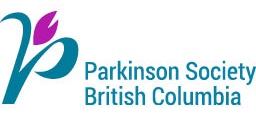Communication Problems in Parkinson’s Disease
Communication difficulties are experienced by as many as 90% of individuals worldwide diagnosed with Parkinson’s disease, and can include speech, voice, and cognitive abilities. The most common communication disorder is hypokinetic dysarthria, a speech and voice disorder that causes rigidity and slowness of the systems of communication, including breathing, voice, and speech. This may manifest as reduced volume, slower speech, hoarseness, articulation issues, and voice tremors.
Problems with communication can result in social isolation and difficulty communicating your needs to your healthcare providers and carepartners. Listeners may have increased difficulty hearing you and may be asking you to speak up repeatedly.
Sound familiar?
- I feel like my spouse needs a hearing aid.
- I’m often misheard when ordering at restaurants.
- I don’t answer the phone anymore.
- I used to go for coffee, but I stopped because my friends can’t hear me.
- I speak but nobody responds. It’s like I am not even there.
Treatment
Evaluation and treatment of hypokinetic dysarthria is performed by a Speech-Language Pathologist (SLP). You may also need to meet with an Ear, Nose, and Throat Specialist. In British Columbia, local hospitals, rehabilitation centres, and movement disorder clinics employ SLPs to provide both inpatient and outpatient services. In addition, many SLPs have private practices.
The Lee Silverman Voice Treatment® (LSVT® LOUD) is an evidence-based treatment for hypokinetic dysarthria. It is an intensive and unique speech therapy specifically designed for the communication problems experienced by people with PD.
Self-help
To strengthen your voice, speech, and communication abilities, try the following strategies:
- Get your listener’s attention before speaking.
- Keep a distance of three to six feet between the listener and yourself.
- Maintain eye contact with your listener.
- Avoid speaking in the presence of distracting background noise.
- You may need to speak slower. Make sure every word is clear.
- Swallow before speaking to clear any pooled saliva.
- Try to speak louder than you are used to speaking.
- Begin speaking with a topic phrase, such as “I would like to talk about…”
- Try to plan important conversations during a time when you are feeling your best (medication “on” time).
Additional Resources
Speech Language Pathologist Directories Speech and Hearing BC | speechandhearingbc.ca/public/find-a-professional
College of Speech & Hearing Health Professionals of BC | cshbc.ca
Lee Silverman Voice Treatment® Global | lsvtglobal.com/LSVTFindClinicians
This help sheet was prepared in collaboration with Sherri Zelazny, Registered Speech-Language Pathologist. Last updated: April 29, 2024
